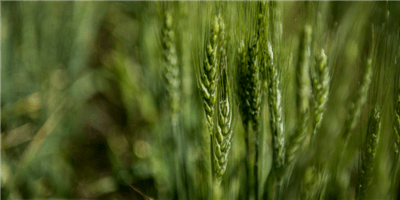BOZEMAN — Montana State University’s Montana Agricultural Experiment Station, or MAES, developed the wheat varieties that Montana farmers planted more than any other variety for the 2016 crop year, according to the United States Department of Agriculture National Agricultural Statistics Service Montana Field Office.
The statistics show that 5.28 million acres of wheat were planted in Montana last year, making it the third-highest state for planted wheat acres in the country. MAES-developed spring and winter wheat varieties accounted for 2.3 million of those acres, or approximately $500 million of $1 billion of wheat sold by Montana farmers in 2016, according to MSU wheat breeding specialists. Some wheat varieties developed and licensed by MSU are sold by private companies. Montana exports 20 percent of agricultural products as foreign exports and 75 percent of its wheat to Asian markets, according to the USDA.
“Wheat varieties developed at Montana State are consistently among the top-seeded varieties planted in the state,” said Charles Boyer, MSU vice president of agriculture. “This demonstrates that our Montana growers value the expertise of our faculty scientists in developing varieties that not only meet the production challenges they face, but also the quality consumers expect. MSU-developed wheat varieties bring enormous value to the Montana and global economies, and our breeding program is a vital part of that agricultural impact.”
Montana producers planted 2.3 million acres of winter wheat for harvest in 2016. MAES-developed varieties Yellowstone, Judee and Warhorse were the top three winter wheats planted last year, with high-yielding Yellowstone accounting for 18.8 percent of the state’s planted acreage. Judee and Warhouse accounted for 18.1 and 10 percent of all winter wheat planted, respectively. Montana is ranked fourth for winter wheat planted acres in the U.S., according to the USDA National Agricultural Statistics Service, Montana Field Office.
Montana producers also planted 2.3 million acres of spring wheat for harvest in 2016, of which 18.8 percent was the MAES-developed Vida, a hard, red spring wheat. This is the sixth year in a row that Vida has been the state’s leading spring wheat variety planted. Montana is the second-largest spring wheat producer in the country, according to the USDA National Agricultural Statistics Service, Montana Field Office.
Luther Talbert, MAES spring wheat breeder and professor of plant sciences and plant pathology, said MSU breeding specialists continue to work closely with the state’s producers to determine, and then meet, their needs for high-yielding, high-protein, pest-resistant varieties that are adapted to Montana’s climate.
“The support and advice of wheat growers in Montana is much appreciated as we set priorities for the breeding program,” he said. “The goal is to develop varieties that help them be more profitable in their operations.”
The Montana Agricultural Experiment Station and the MSU College of Agriculture Department of Plant Sciences and Plant Pathology host a world-renowned plant breeding program that emphasizes both traditional and molecular approaches in plant breeding and genetics that emphasizes high yields, pest resistance and high quality. More information about the breeding program is available at http://plantsciences.montana.edu/.
Source: MSU News Service


